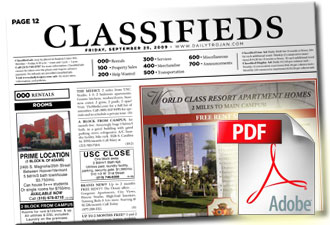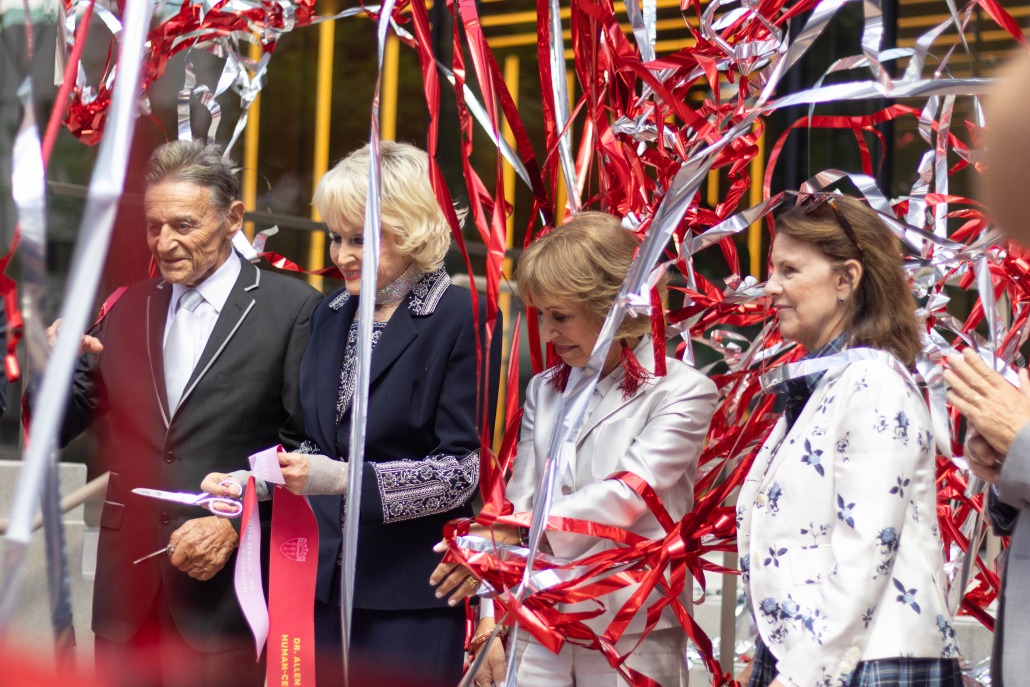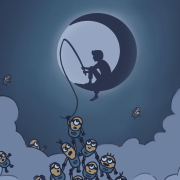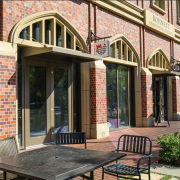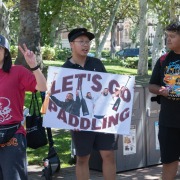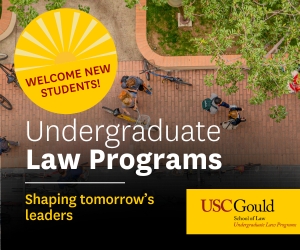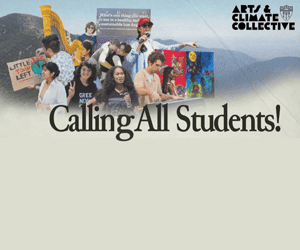Posted on 18 September 2024.
Walked around East Bank lately? You’ve likely had the misfortune of laying eyes upon Coffman Union. Surrounded by concrete and covered with scaffolding, the building sticks out like a sore thumb across the shade-dappled lawns of Northrop Mall.
It only gets worse as you walk inside. The glass doors of the main entrance lead to a central room framed by pillars in a jarring shade of yellow with chrome detailing. The floor is divided into sections of dark gray carpet and sleek black tile, with the glare of fluorescent lights and the glow of chic wall sconces overhead. It is Art Deco meets outdated office building — a concept best left for the wastepaper basket.
The free-to-use baby grand piano tucked into the corner fills the space with the pleasant noise of impromptu pianists, but it hardly makes up for the lack of grandeur.
Constructed in 1940 as “a center for social life,” Coffman Union holds the sprawling University Bookstore, a food court, a movie theater, a post office, event spaces, a bowling alley and more.
While it provides essential student resources, it’s due for a major upgrade.
Besides its displeasing aesthetic, Coffman Union suffers another affliction — too many students. The class of 2028 has 7,300 freshmen, the most in University of Minnesota history, which has contributed to the crowding of study spaces, buses and food lines across campus this semester.
Wincy Perez, a third-year student, said he dislikes how busy the food court gets around lunchtime. At midday, the sight of the Coffman Union food court is pandemonium. Employees yell out order numbers and students pack in like sardines between the King’s Hawaiian Grill and Panda Express. It’s not a pleasant place to spend time between classes.
But if there’s one rule at Coffman Union, it’s the lower you go, the worse it gets.
Below the hectic food court is the basement floor. While home to Goldy’s Gameroom and the lively Whole Music Club, it feels more like a bunker than a place to socialize on a Friday night. The ceilings are low enough for any tall person to touch, and the only seating is next to the escalators in a windowless hallway. Nonetheless, the space was teeming with students typing furiously at their laptops, looking stressed and uncomfortable in the sterile atmosphere.
Philip Buabeng, a third-year student, said when he needs to study, he finds the spaces at Coffman Union inadequate. Walter Library is often full, so it can be difficult to find a reliable place to work on East Bank, Buabeng said.
“There’s no dedicated study space,” Baubeng said. “Just spaces where you can just sit.”
I’ll admit Coffman Union is not bad in its entirety. There’s always something fun going on, from concerts at the Whole Music Club to the immensely popular bingo night on Wednesdays. According to Student Unions and Activities (SUA), the Campfire Kickoff event at the start of this semester drew a crowd of more than 700 students, highlighting their work in engaging the student body.
There’s also the newly renovated second floor — walk up three flights of stairs from the dreadful basement and you feel as though you’re in a different building. The space offers stylish study spots (which are often fully occupied) and places for student groups ranging from the Queer Student Cultural Center to the Asian American Student Union.
Ayden Davis-Barth, a University engagement chair for the Black Student Union (BSU), said while the Coffman Union could use a little more love, he appreciates having a dedicated place for students in BSU to relax, study and socialize on campus.
“Given the current state of BSU, it’s more than enough space,” Davis-Barth said.
He also expressed gratitude for his relationship with Mi Gente, the Latino student group next door, which fits the building’s intention of fostering unity. Perhaps Floor Two could serve as a blueprint for the lower floors of the Union, which are years past the point of needing a renovation.
The nicest part of the Union, the Campus Club, is mostly inaccessible to students. The full-service restaurant and bar sits atop the building’s crown and provides sweeping views of the Minneapolis skyline and Mississippi River but at a price. A membership costs students $50 per year, allowing unlimited entry into the restaurant. The cherry on top? You still have to pay for the food, which is expensive in its own right.
For a building designed to unite the student body, dedicating the swankiest floor for serving overpriced lunches and hosting private events is a middle finger four stories above us cash-strapped students.
Coffman Union is supposed to be the heart of campus, but the University has let much of it go to waste. It’s not a place where I feel inspired or excited to be a Gopher. To me, it’s just a dingy building where I go to mail a package or pick up a textbook from the bookstore.
Jason Hancock, director of SUA, said while the University is considering renovations and updates to Coffman Union, they’re focusing on the planned reconstruction of the St. Paul Student Center.
“We continue to hear, not just us at SUA but through Student Affairs and our other units, how neglected the St. Paul campus feels,” Hancock said. “As we’re trying to serve all students, that’s really where our energy has gone.”
As someone who takes classes on the St. Paul campus five days a week, I couldn’t agree more. But the University needs to prioritize more than just one important building at a time, especially those in such need of repair.
There’s also the elephant in the room — Lotus Delta Coffman, for whom the building takes its name.
Coffman served as the fifth president of the University from 1920-1938 and was notoriously racist and anti-semitic, closely monitoring Jewish student admissions and outspokenly barring African-American students from living in dormitories.
In 2018, the Minnesota Student Association passed a resolution to rename Coffman Memorial Union, but the Board of Regents struck down the proposal in a 10-1 vote. I can’t imagine why just “Memorial Union” would be such a terrible name, but it’s a shame a building meant to serve every student at the University still bears the legacy of its bigoted namesake.
Our University is changing, Coffman. It’s time to catch up.



